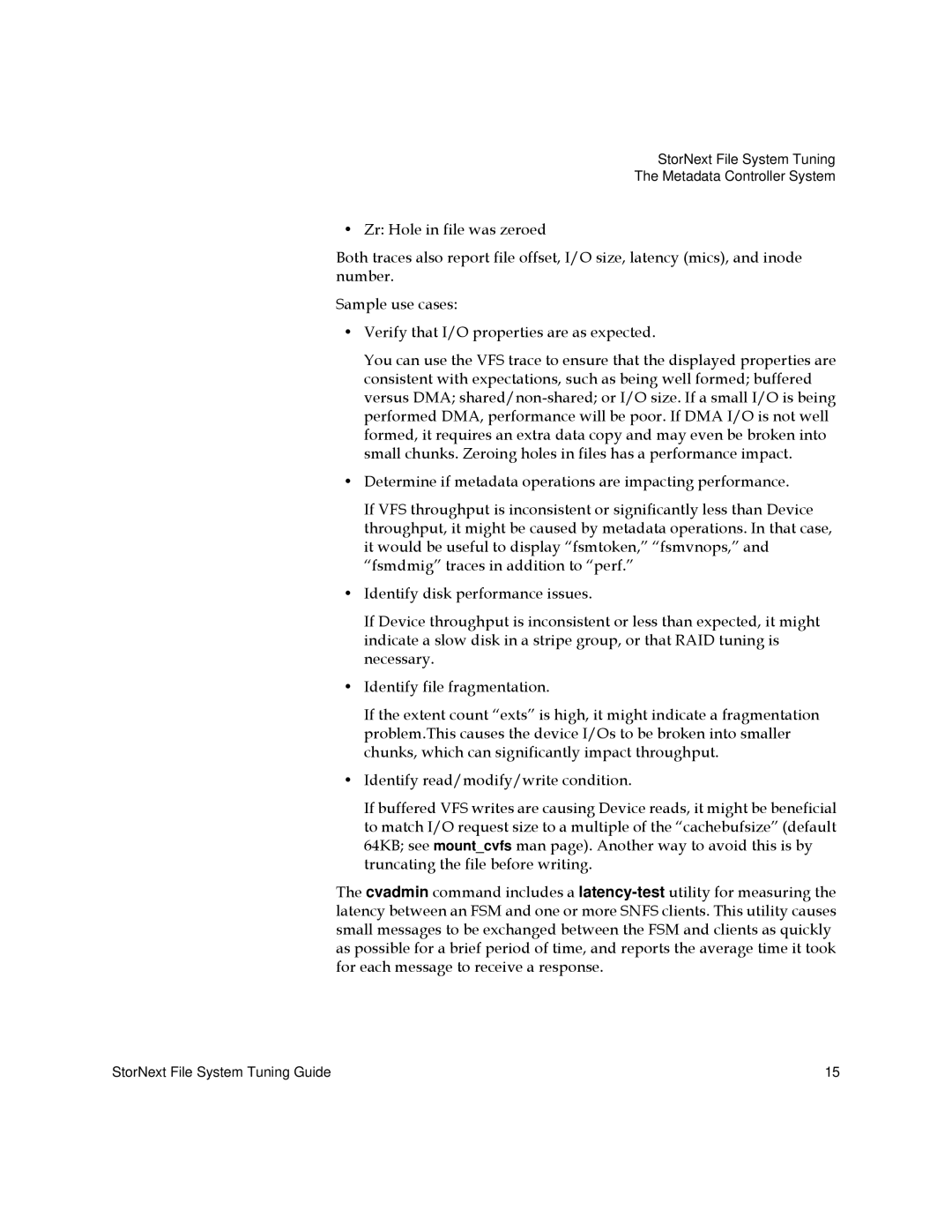StorNext File System Tuning
The Metadata Controller System
• Zr: Hole in file was zeroed
Both traces also report file offset, I/O size, latency (mics), and inode number.
Sample use cases:
•Verify that I/O properties are as expected.
You can use the VFS trace to ensure that the displayed properties are consistent with expectations, such as being well formed; buffered versus DMA;
•Determine if metadata operations are impacting performance.
If VFS throughput is inconsistent or significantly less than Device throughput, it might be caused by metadata operations. In that case, it would be useful to display “fsmtoken,” “fsmvnops,” and “fsmdmig” traces in addition to “perf.”
•Identify disk performance issues.
If Device throughput is inconsistent or less than expected, it might indicate a slow disk in a stripe group, or that RAID tuning is necessary.
•Identify file fragmentation.
If the extent count “exts” is high, it might indicate a fragmentation problem.This causes the device I/Os to be broken into smaller chunks, which can significantly impact throughput.
•Identify read/modify/write condition.
If buffered VFS writes are causing Device reads, it might be beneficial to match I/O request size to a multiple of the “cachebufsize” (default 64KB; see mount_cvfs man page). Another way to avoid this is by truncating the file before writing.
The cvadmin command includes a
StorNext File System Tuning Guide | 15 |
